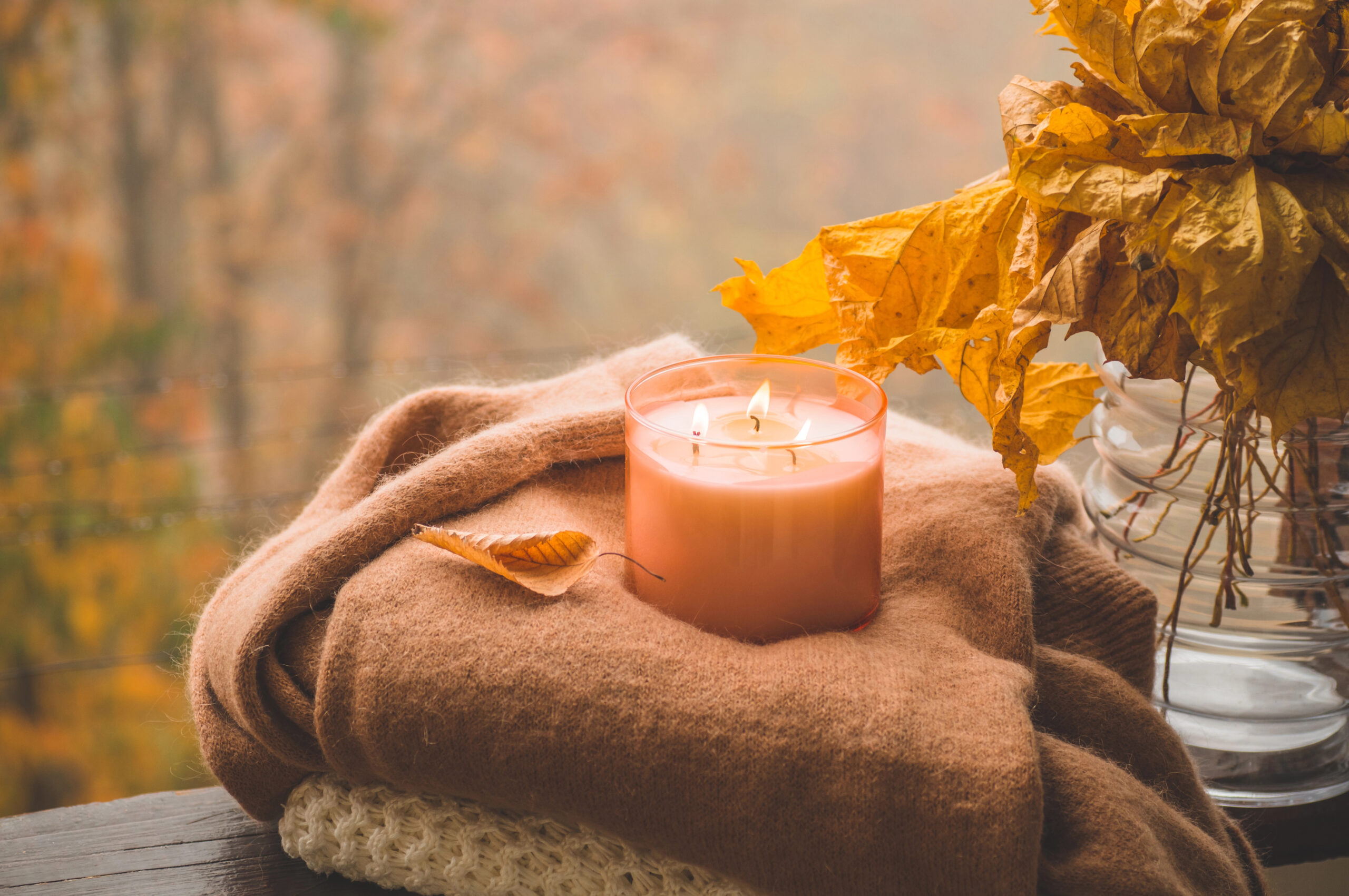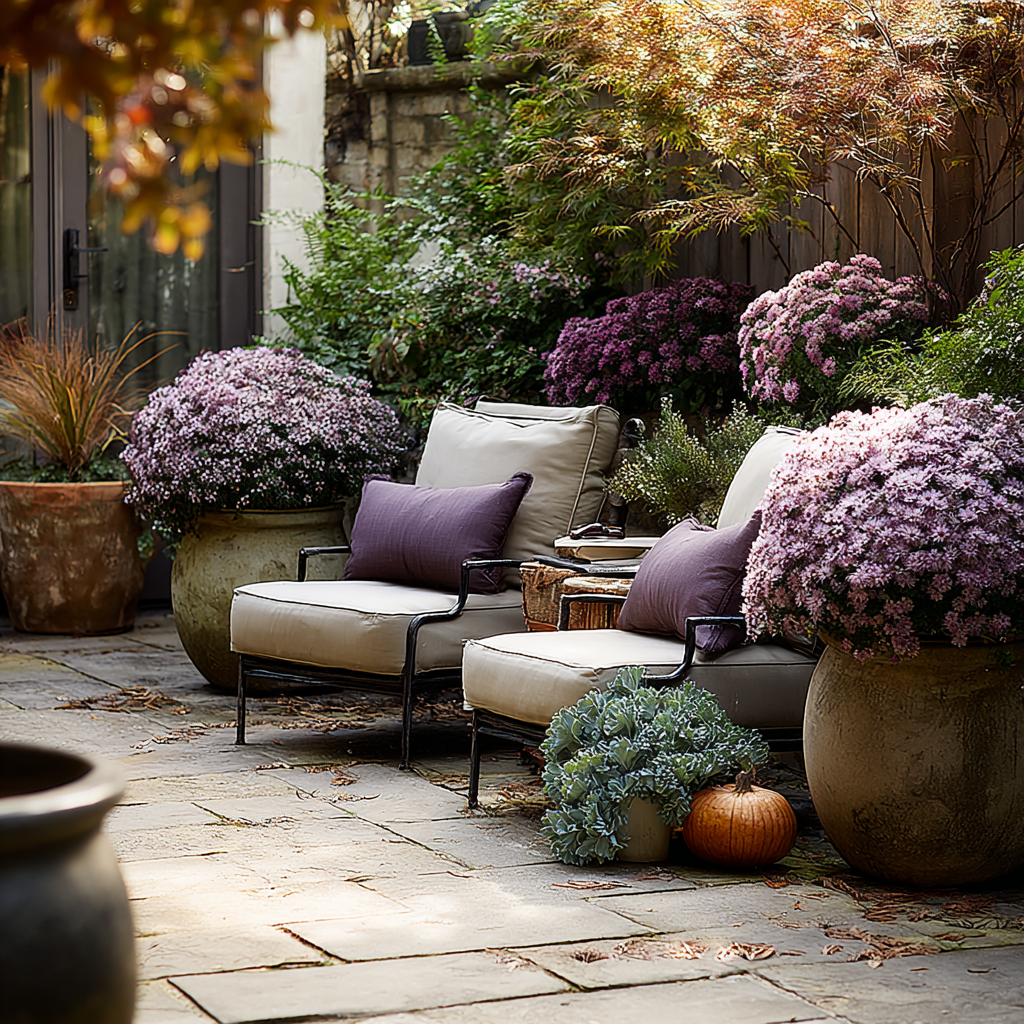Ever plant a small garden that immediately loses its spark as soon as autumn settles in? The blooms that filled every inch with color start to fade, and suddenly the space feels bare. In a larger yard you can overlook those empty corners, but in a small one? Every inch shows. That’s why fall isn’t about chasing color—it’s about layering cozy textures that keep your fall garden decor looking styled right through the season.
The right mix of foliage, bark, grasses, and containers can transform even the most compact space into one that feels warm, inviting, and pulled together. Think of textures as the throw blankets and pillows of your outdoor room—they bring instant comfort without taking up extra square footage.
Let’s walk through the best ways to use texture for fall garden decor in a small space.
Ornamental Grasses That Add Texture to Fall Gardens
Grasses are one of the easiest ways to bring instant texture into a small garden. Their seedheads glow in slanted autumn sunlight, they sway in the breeze, and they add movement where other plants have gone still. Even one clump can become the star of a border or container, but the key is choosing varieties that stay compact and manageable.
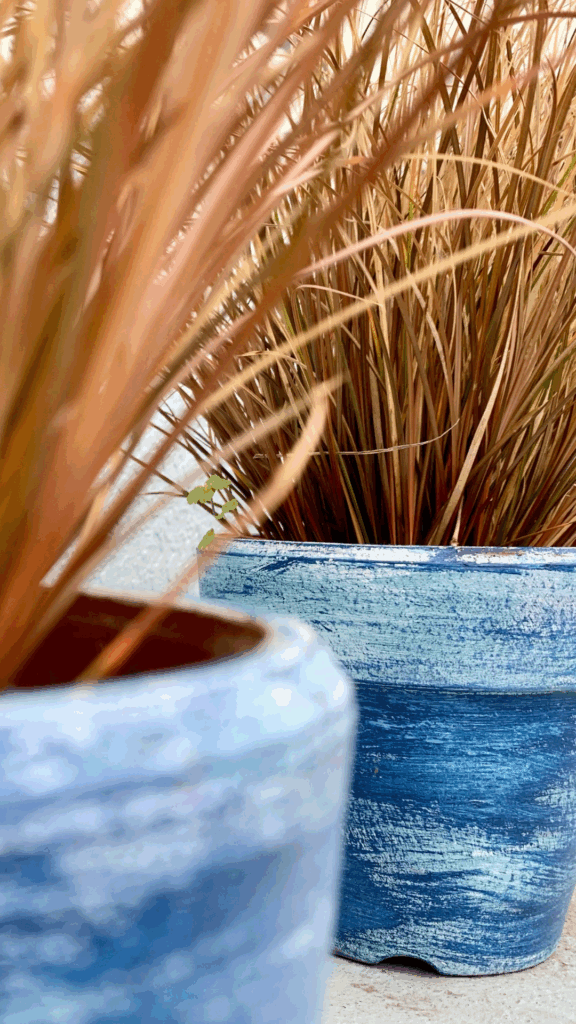
When planting grasses in containers, a little planning makes a big difference. They prefer wide pots since their clumps expand over time—every four or five years you’ll need to lift, divide, and replant them. A good-quality potting mix is essential: it should drain freely while still holding enough moisture to keep roots from drying out. In colder climates, grasses in pots are more vulnerable to winter freeze. To help them survive, tuck containers against a house wall for warmth, wrap them with burlap or wool, or top the soil with a thick layer of mulch or straw. These small steps can mean the difference between losing a plant and enjoying it again next spring.
For small spaces, try dwarf varieties like Pennisetum ‘Hameln’ (a compact fountain grass perfect for pots), Miscanthus ‘Little Zebra’ with its striped, upright blades, or Festuca glauca (blue fescue), a tidy mound of icy blue foliage that softens edges beautifully.
Small Shrubs That Bring Structure to Fall Garden Decor
Once you’ve added the airy movement of grasses, shrubs provide the grounding structure that keeps a small garden from looking unfinished. But here’s the challenge: most shrubs are bred for big landscapes, and in a compact space, one oversized choice can overwhelm the whole design. The solution is to focus on dwarf cultivars that deliver seasonal drama without the bulk.
Take oakleaf hydrangeas, for example. Their burgundy leaves are stunning in fall, but most varieties stretch 12 to 15 feet—hardly the right scale for a townhouse border or courtyard. Instead, look for compact selections like Hydrangea quercifolia ‘Munchkin’ or ‘Ruby Slippers’, which top out at just three to four feet. They offer the same rich autumn foliage but stay comfortably in proportion. Smaller shrubs like Physocarpus ‘Tiny Wine’ (a dwarf ninebark with moody purple leaves) or glossy dwarf viburnums also make excellent companions, adding depth without swallowing up precious space.
For most small gardens, these shrubs are better planted directly into the ground rather than containers, unless you have a very large pot. Pair one with a grass or perennial, and you’ll have an elegant vignette that feels balanced and intentional.
Bark and Stems That Keep Fall Gardens Interesting
As the season advances and more leaves fall, stems and bark quietly take center stage. In a small garden, where winter interest is limited, a single plant with striking bark can carry the entire design.
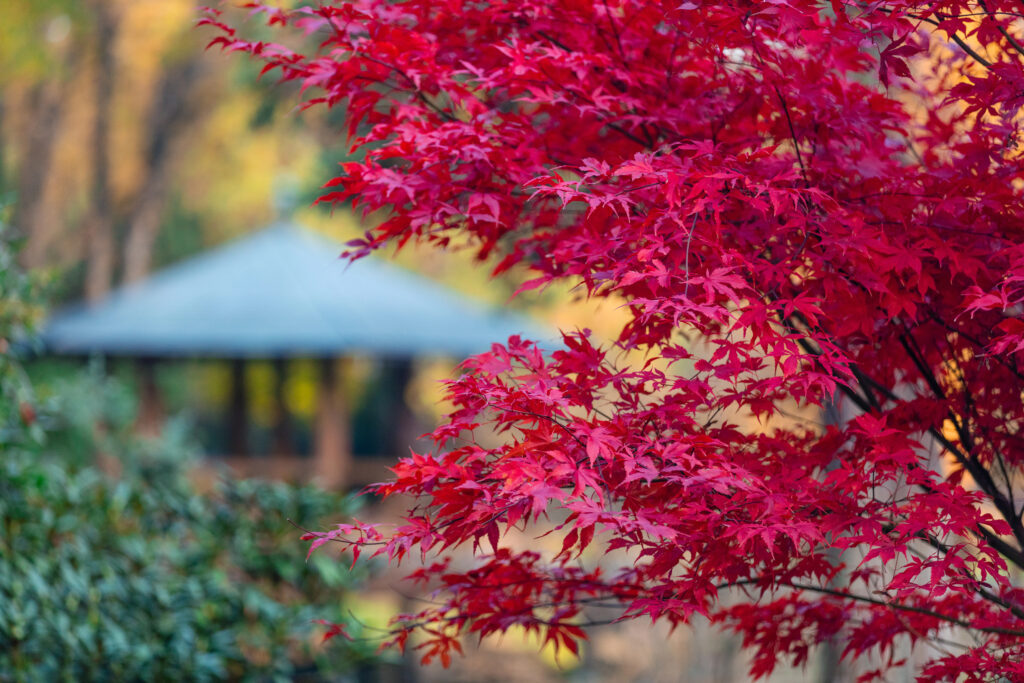
Red twig dogwood is a classic choice. Its fiery stems glow in winter light and look especially dramatic against evergreens or mulch. Compact cultivars like Cornus sericea ‘Arctic Fire’ stay under five feet, making them easy to tuck into borders. Better yet, their branches can be clipped and added to winter container arrangements, giving you double the impact. For vertical accent, consider Acer palmatum ‘Sango Kaku’ (Coral Bark Maple), a Japanese maple whose coral-red bark intensifies in cold weather. And for those with just enough room for a specimen tree, Betula utilis ‘Jacquemontii’ (Himalayan birch) brings crisp white bark that reads as architectural art in the garden.
Even in the smallest space, one of these “bark stars” can anchor the view through winter, giving the garden structure when everything else has gone quiet.
Perennials That Hold Their Texture
Perennials don’t have to be in bloom to earn their spot in the fall garden. Many age gracefully, offering shapes, seedheads, or foliage that add interest long after their flowers are gone. In fact, leaving them standing can add layers of texture that keep a small garden looking designed rather than dormant.
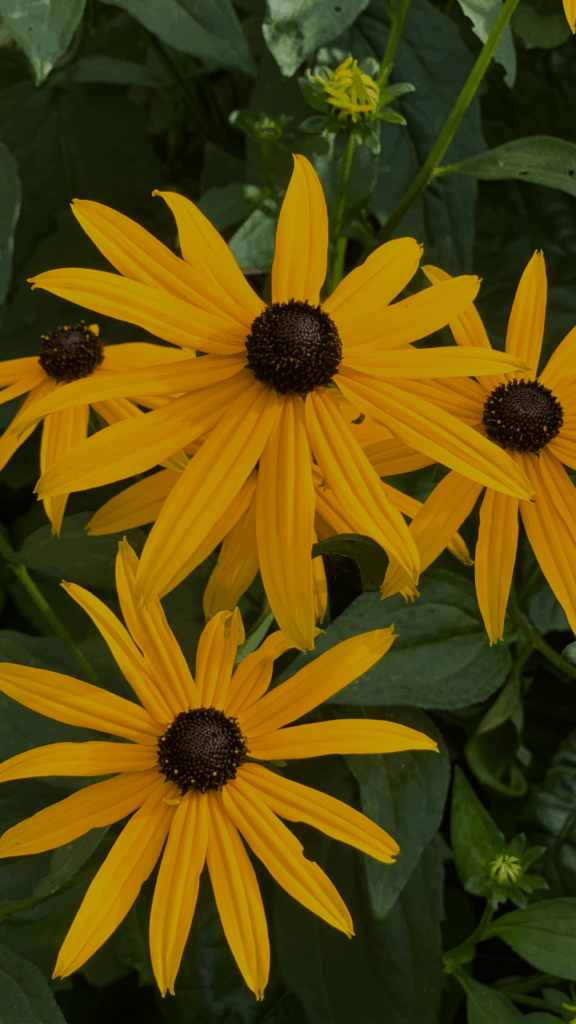
Rudbeckia, for instance, forms bold dark seedheads that hold their shape well into winter. Heucheras bring color through their leaves rather than flowers, with varieties like ‘Caramel’ and ‘Obsidian’ offering tones of amber, plum, and near-black. Evergreen sedges, with their neat mounds, soften edges and provide an easy, low-maintenance filler between shrubs and grasses.
These plants are the knit sweaters of your garden—quiet, reliable, and able to carry the look through cooler months.
Using Containers for Fall Garden Styling
Containers are often the unsung heroes of small gardens. They add height, variety, and flexibility, and for anyone gardening on a balcony or paved courtyard, they may be the only option. But in fall, the container itself becomes just as important as the plant it holds.
A “textured container” simply means a pot with a finish that adds visual weight to your design. Aged terracotta brings warmth and patina, woven wicker baskets feel cozy and rustic, and zinc or stone planters add sleekness and contrast. When grouped together, these materials create richness even before you plant them. For maximum effect, try combining three containers in different finishes and filling them with a mix of grasses, small shrubs, or cool-season perennials.
The result isn’t just a collection of pots—it’s a styled corner that reads as intentional decor.
Layering Fall Textures Without Clutter
The biggest challenge in small gardens is knowing when to stop. It’s tempting to fill every inch with plants, but restraint is what creates elegance. Instead of cramming in more, think in terms of balance: one tall element for height, one medium element for structure, and one container that adds both texture and depth. Together, that trio anchors the space without tipping into chaos.
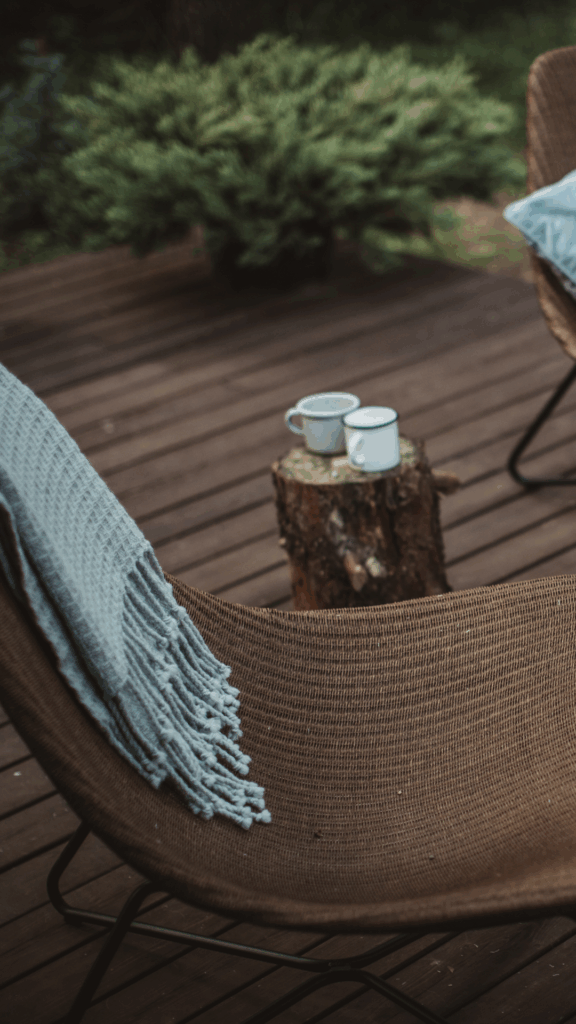
Think of it like decorating a living room—you don’t need ten chairs to make it functional. A sofa, a chair, and a lamp are enough to define the space. The same principle works outdoors.
Lighting and Cozy Touches for Fall Gardens
Texture isn’t limited to plants and containers. Lighting and decor add the final layer that makes a space feel lived-in and welcoming. String fairy lights through a small tree, scatter lanterns on a path, or place hurricane candles on steps. Add a woven blanket over a bench or a jute rug under a chair, and suddenly the garden feels like an extension of your home.
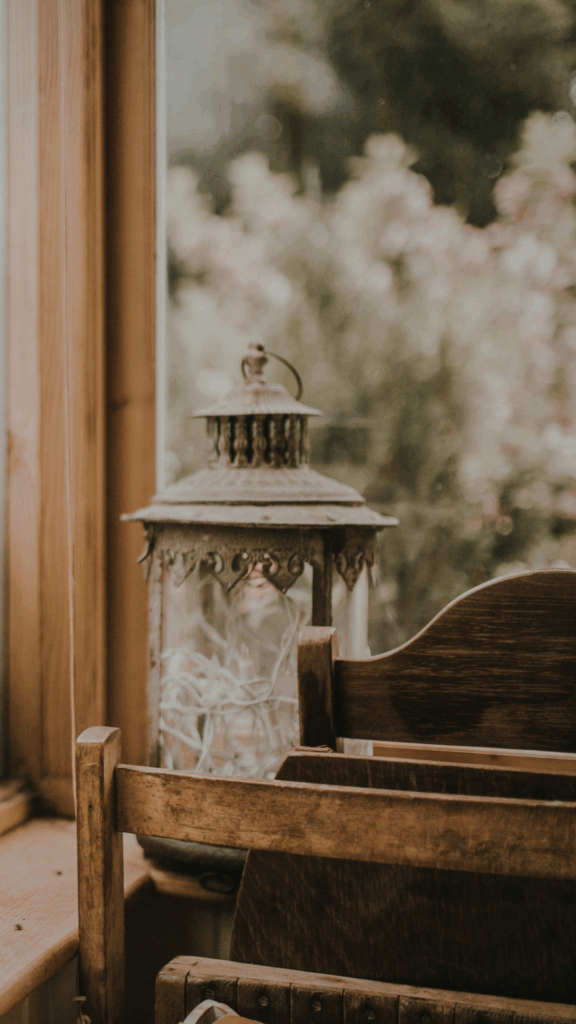
These cozy touches highlight the textures you’ve layered in plants and pots, carrying the atmosphere from day into evening.
Fall is the season where texture takes center stage. By layering grasses, shrubs, bark, containers, and a touch of light, you can turn even the smallest garden into a space that feels styled, cozy, and ready for the season ahead.
